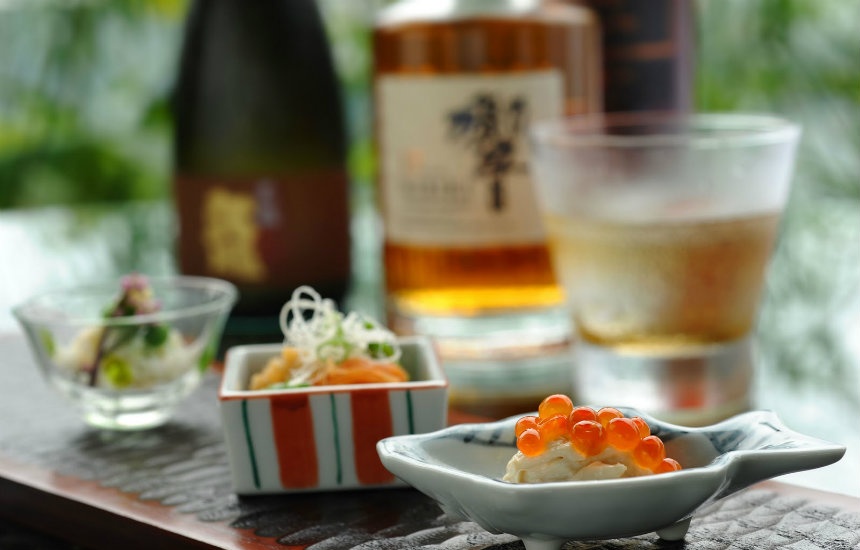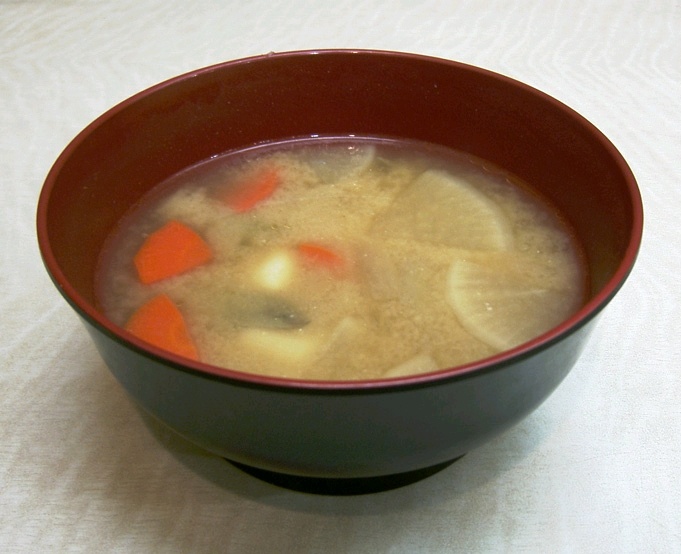3 Tips on Japanese Food Presentation
If you’d like to branch out a bit from your usual sushi rolls and try your hand at some more advanced washoku (Japanese food) recipes, not only taste but also presentation is key. We’ve collected a handful of simple tips from the pros on how to make your Japanese cooking look as good as it tastes.
By SoraNews241. Keep in mind the three rules of threes

https://commons.wikimedia.org/wiki/Category:Sashimi#/media/File:Jisaku_Kaiseki_Ryori_03.jpg
Red, yellow and green are key colors in Japanese cooking. Getting a nice balance of all three in your presentation will make the food look appealing and bright.
https://commons.wikimedia.org/wiki/Category:Sashimi#/media/File:Bowl_of_sashimi,_in_osaka.JPG
In addition, a triangular (three-sided) composition on the plate looks nice and catches the eye. Think about how sashimi is served. It’s usually bolstered up with a bit of shredded daikon radish and laid out like a little mountain.
And around your little mountain, try to keep about 30 percent empty space on the plate. If the plate is too loaded up, the diner will feel full just looking at it, subduing their appetite. Choose serving dishes based on the amount you’ve made, leaving room for that open space.
2. There are courses, of course
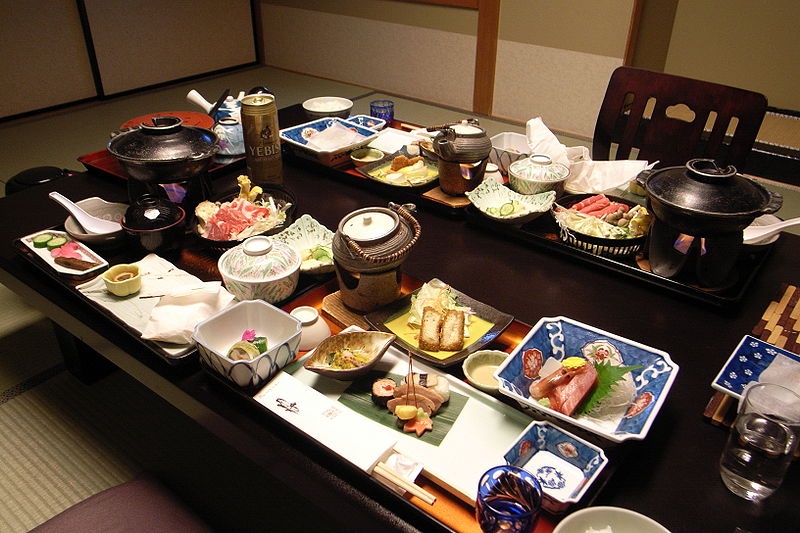
https://commons.wikimedia.org/wiki/Category:Hotel_meals_in_Japan#/media/File:Dinner_at_Kinugawa_Plaza_Hotel.jpg
Just as in many Western cooking traditions, washoku has traditional courses or items that should be included in a meal. One is aemono: chopped vegetables, fish or shellfish with sauce, usually miso-based. This side dish should be served not just to the side of the main, but on its own small plate.
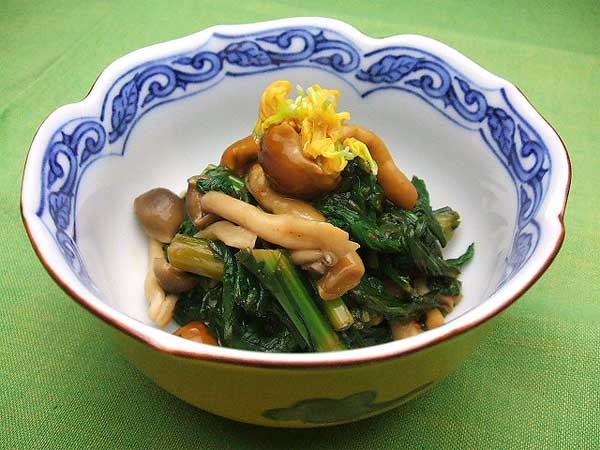
http://en.rocketnews24.com/2014/01/09/japanese-food-presentation-pro-tips-on-making-dishes-you-can-devour-with-your-eyes-and-mouth/
The most pleasing-to-the-eye presentation for aemono is also a little mountain, often with a tiny garnish on top like a slip of lemon peel. To get this presentation to hold, you’ll want to chop your ingredients into bite-sized pieces, and try to get fairly uniform sizes even if you're using several different ingredients.
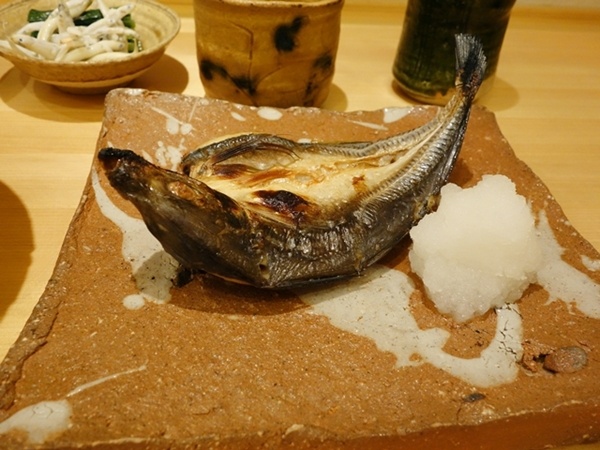
http://en.rocketnews24.com/2014/01/09/japanese-food-presentation-pro-tips-on-making-dishes-you-can-devour-with-your-eyes-and-mouth/
The side dish that actually goes beside the main is called soemono, or supplement. It’s something that is meant as a topping or to be eaten in the same mouthful. A good example is the grated daikon radish that often accompanies grilled fish.
Soemono should go on the same plate as the food it accompanies, but to the right of it. This is because most Japanese people are right-handed, so it makes it easier to pick up the soemono and place it on the main.
3. Match your presentation to your plate
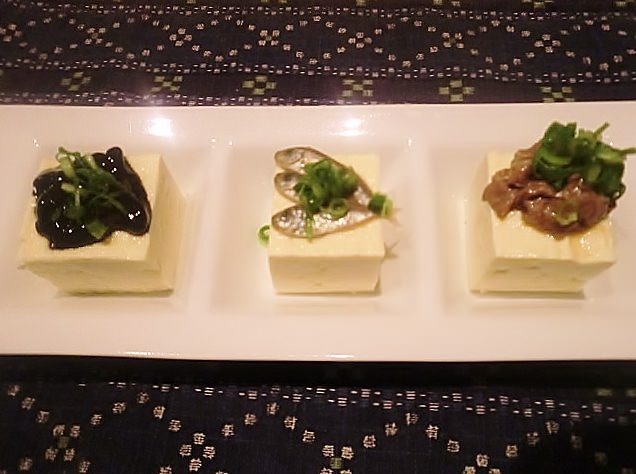
http://en.rocketnews24.com/2014/01/09/japanese-food-presentation-pro-tips-on-making-dishes-you-can-devour-with-your-eyes-and-mouth/
Going back to the rule of threes, you may have seen rectangular plates with three “compartments” in them at Japanese restaurants. These are a popular way of serving small nibbles. Not only does it look nice and balanced, it keeps the three items separate, making for a neat presentation without too much fuss. Even without the special dish, evenly spaced groups of three on a long plate look great with the small portions used in Japanese cooking.
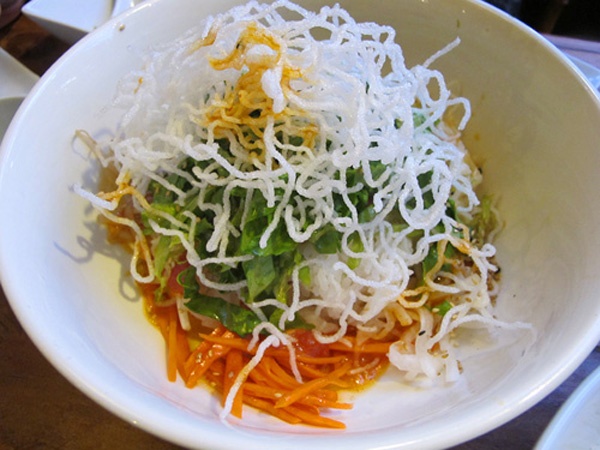
http://en.rocketnews24.com/2014/01/09/japanese-food-presentation-pro-tips-on-making-dishes-you-can-devour-with-your-eyes-and-mouth/
If you're using a big bowl, try to get your dish mounded in the center, with lots of room around the edges to garnish. Think of the bowl as a kind of miniature garden or terrarium and make it look pretty.
When it comes to soup, like the ever-popular miso soup, it's served individually in small bowls about the size of your cupped hands. Don’t fill it up to the brim though. Not only is that messy, it just doesn’t look nice. About 60 percent full is a good rule of thumb.
There you go! With those tips and some washoku recipes, you’ll be cranking out beautiful Japanese meals in no time. Happy cooking!
Related Stories:
Grated radish art from Japan brings the cute to your favourite dishes
How to make okonomiyaki at home
Vegetables are smarter than fruits: Three high IQ Japanese veggies


